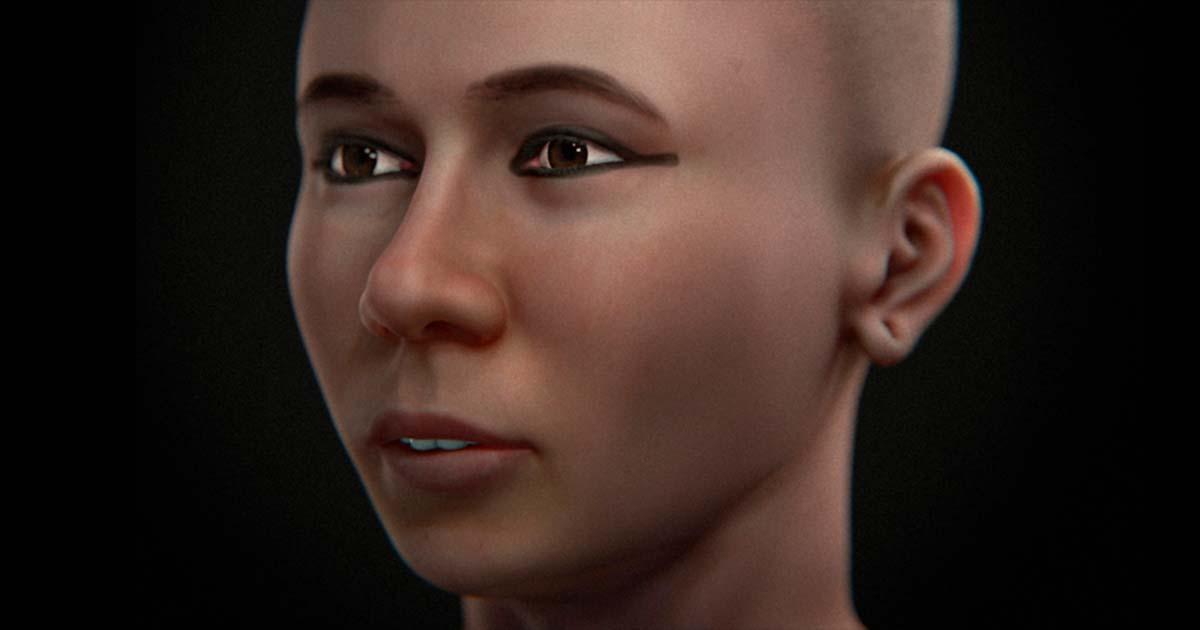
New Study Unveils the Face of Egypt's Iconic Pharaoh Tutankhamun
Researchers have conducted a new study aiming to shed light on the facial appearance of the ancient Egyptian pharaoh, Tutankhamun. The study, led by a team of forensic experts and anthropologists, utilized advanced techniques and historical data to create a facial approximation of the young king.
Physical Findings on Tutankhamun
Tutankhamun, born as Tutankhaten, ascended to the throne at the age of 9 and ruled for approximately a decade during the 18th Dynasty of ancient Egypt. His reign, which took place between 1333 and 1324 BC, has been the subject of much speculation and mystery surrounding his life and death.
According to the study just published in the Italian Journal of Anatomy and Embryology, the first autopsy performed on Tutankhamun's body in 1925 provided limited information about the cause of his death. However, subsequent examinations, including X-ray images in 1968 and a computed tomography scan in 2005, offered more insights into both his health and potential causes of death. These examinations ruled out the hypothesis of assassination but raised questions about a possible knee fracture near the time of his death.
- King Tut Stepped on his Enemies: Learning from Tutankhamun’s Sandals
- King Tut's Tomb Was “Raided” By Artifact Thief Howard Carter

The 2023 facial reconstruction of King Tutankhamun, using the latest developments in 3D reconstructions from skeletal remains. (C. Moraes et al.)
In 2010, a groundbreaking study involving DNA analysis of Tutankhamun and his family members revealed important information about his health conditions and familial relationships. The study confirmed that Tutankhamun suffered from malaria and Köhler's disease and had close familial ties to Akhenaten, his likely father, and the two stillborn fetuses found in his tomb.
The Boy King Reconstructed
Tutankhamun's facial appearance has long intrigued researchers and the general public. Over the years, various facial approximations have been created using forensic techniques.
In 1983, forensic artist Betty Pat Gatliff reconstructed Tutankhamun's face based on a plaster skull molded from radiographs.
In 2005, three teams (one Egyptian, one French and one American) independently developed facial reconstructions using the segmented skull from a computed tomography scan, resulting in slightly different interpretations of the pharaoh's appearance.

Left, Pat Gatliff with her 1984 rendering of Tutankhamun. Right, 2005 Reconstruction by the Egyptian Team, based on a CT scan. (Left, Courtesy of Florida Gulf Coast University Library Archives and Special Collections, Florida Gulf Coast University. Right, Supreme Council of Antiquities and National Geographic Society, 2005)
The recent study by a team of academics from Brazil, Australia and Italy employed advanced digital techniques to reconstruct a three-dimensional skull of Tutankhamun based on available data, including tomographic slices, X-rays, and anthropometric measurements. The researchers used a process called anatomical deformation to adapt the segmented bone structure to match the characteristics of Tutankhamun's skull. This reconstructed skull then served as the basis for a facial approximation using forensic techniques.
It must be said, there is an obvious similarity between the 2005 reconstruction and the latest attempt, although King Tut, seems to have become younger. Cicero Moraes, who co-authored the new study, said: 'To me he looks like a young man with a delicate face.’
Even Dr Michael Habicht, Egyptologist and archaeologist at Australia’s Flinders University, and one of the writers of the study, noted the finished rendering is ‘amazingly close’ to a previous one, reports the Independent. Perhaps this means they are really on to something with this portrayal.
- Tutankhamun Used Condoms Made from Oil-Soaked Linen
- The Twin Tragedy of Tutankhamun: Death of a Dynasty

Front view of the 2023 facial reconstruction of King Tutankhamun. (C. Moraes et al.)
Creating King Tut
The team utilized the OrtogOnBlender software, a free and open-source program, to model the facial features and generate the final images. The process involved complementing missing regions of the skull, projecting the face's profile and structures using statistical data, and detailing the face and hair configuration.

A-I Steps of the forensic facial approximation process. (C. Moraes et al.)
The results of the study present a facial approximation of Tutankhamun that provides valuable insights into his appearance during his lifetime.
“Looking at him, we see more of a young student than a politician full of responsibilities, which makes the historical figure even more interesting”, Cicero Moraes told MailOnline.
The researchers emphasized that the technique used in the study is not about identification but about recognition, which can lead to subsequent identification.
This new study contributes to our understanding of Tutankhamun's physical appearance and offers a glimpse into the life of this ancient Egyptian pharaoh. The findings provide researchers and the general public with a visual representation of the young king, sparking further fascination and curiosity about the mysteries of ancient Egypt.
Top image: 3D reconstruction of Egyptian King Tutankhamun from 2023. Source: C. Moraes et al.
By Gary Manners
References
Moraes, C. et al. ‘ Pharaoh Tutankhamun: a novel 3D digital facial approximation.’ Italian Journal of Anatomy and Embryology, Florence University Press, Vol. 38 - n. 1-2, JUNE 2023. Available at: https://www.researchgate.net/publication/371120172_Pharaoh_Tutankhamun_a_novel_3D_digital_facial_approximation















